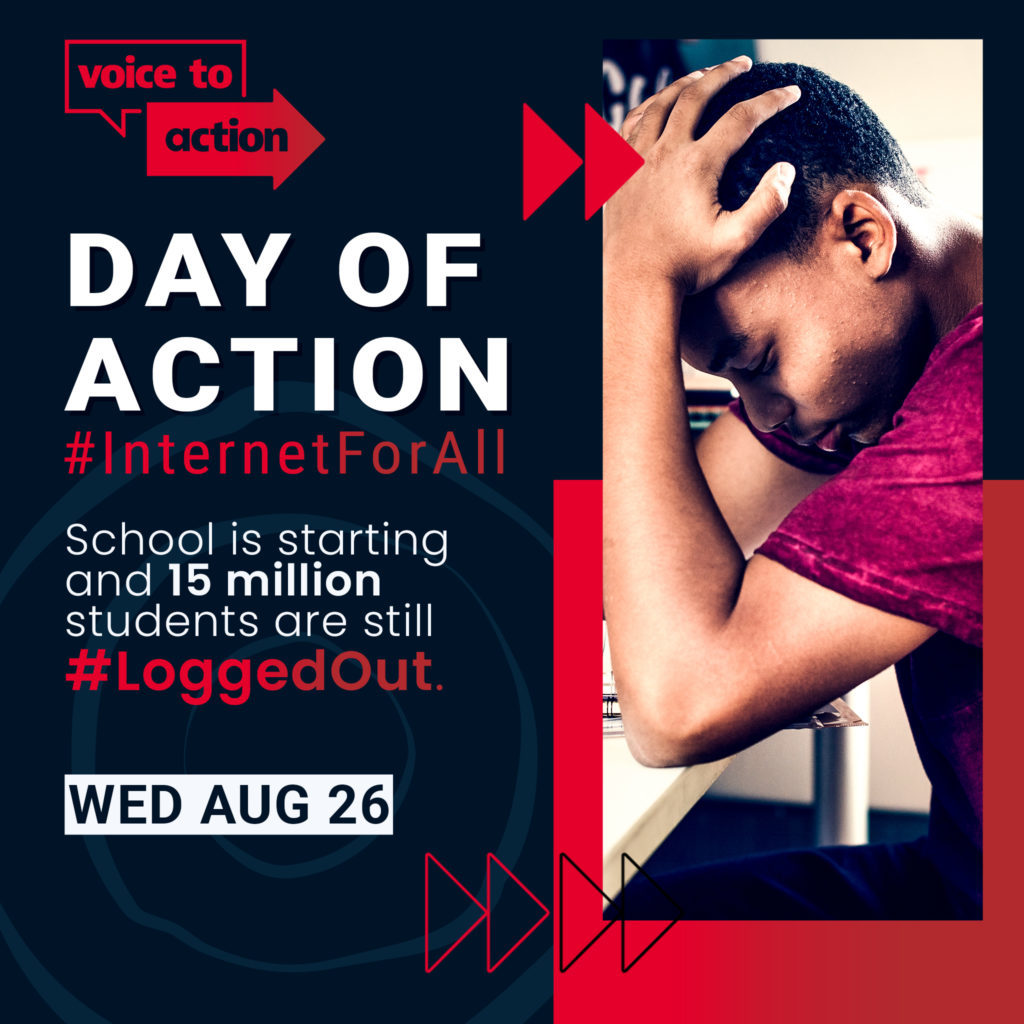Today education activists and organizations across the country are joining together for a National Day of Action to demand #InternetForAll. Why? School is starting up around the country but kids are stuck at home, and 15 million of them are #LoggedOut because they don’t have a decent internet connection. In six cities (see here), activists will be demanding #InternetForAll.
Want to get involved? Go to this page for a digital toolkit and check out this site. (Or you can hop over to Philly and gather outside Comcast Tower–1701 John F. Kennedy Blvd– at 1:00 where Zach Wright will lead a rally demanding justice, access, and equity for all students.)
Want to know how this affects New Jersey students? Read the op-ed below by Mark Finkelstein, Superintendent of Schools for the Educational Services Commission of New Jersey, called “Time is Running Out For New Jersey TO Bridge the Digital Divide.” (It originally appeared in North Jersey.)

Among the plethora of challenges facing New Jersey school districts and families is the universal accessibility to the Internet, especially in communities of color.
Many harsh lessons were learned this spring, when school districts attempting to develop a meaningful remote curriculum struggled with ensuring all students had access to the Internet. With so many children unconnected, online technology had to be cast aside, as teachers resorted to assignments on paper that had to somehow be collected, graded and returned.
As the calendar quickly turns to September, there are many school districts still struggling with online access.
We have heard of school districts installing Wi-Fi connections at their shuttered schools so that students can gather outside to access the hotspot. We have seen school districts partnering with the community — such as non-profit organizations and businesses — to allow district students to access their Internet connection to complete their assignments.
While these are great gestures, they are certainly not sustainable solutions. That is why the state needs to use government funding for reliable Internet access, as well as to provide cyber security, digital content, training and technical services.
Recently, the Educational Services Commission of New Jersey (ESCNJ) responded to Gov. Phil Murphy’s request to submit ideas for bridging the Digital Divide. As the state’s largest cooperative purchasing program, with more than 1,300 government, schools, libraries and emergency services taking part, we are well-qualified to offer solutions.
The ESCNJ plan calls for $110 million in funding — either through the CARES Act or through the state’s borrowing program of upwards of $9.9 billion. Our plan to bridge this Digital Divide would mobilize a dozen pre-screened vendors through our co-op who could quickly be dispatched across the state to focus on the problem.
Our immediate recommendation: The state’s school districts must identify the exact number of students who lack connectivity or need devices.
If 250,000 students need access, they can all be connected for less than $50 million based on existing solutions. If these 250,000 students also need devices, assume $150 for each, equaling $37.5 million. The remainder of the $110 million should be used for ancillary services, such as cybersecurity.
We speak from direct experience. ESCNJ has been working with the state for six years to ensure every school in the state has strong Internet to administer online testing and digital instruction. To date, that program has been an unbelievable success; improved bandwidth by 155%, with $275 million in savings.
Any school district can now access our “Digital Divide” website, allowing school officials to go step-by-step through the governor’s priority areas. First, they can evaluate their Internet connectivity needs, at home and in a mobile environment. Second, they can choose devices for purchase, such as laptops or tablets. They can also select related items necessary for success, like cyber-security tools, applications and content. The program creates a simplified process for districts to quickly buy what they need — just in time for the new school year.




